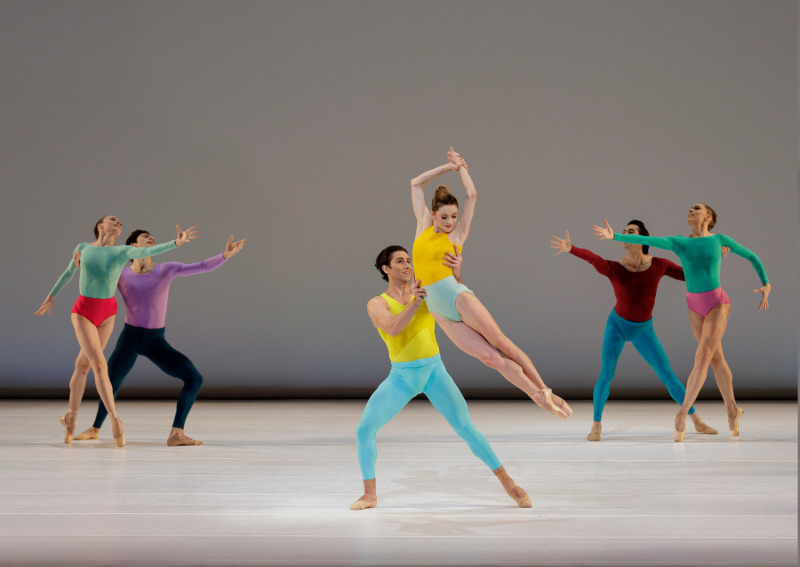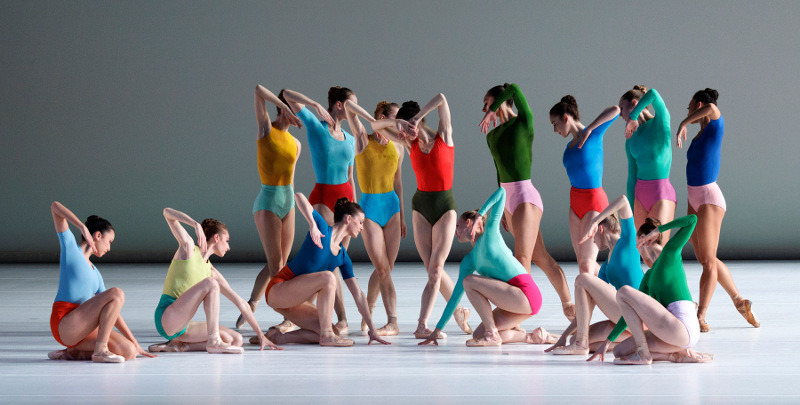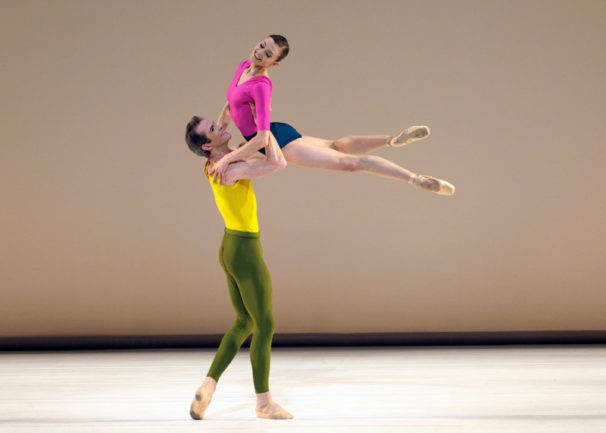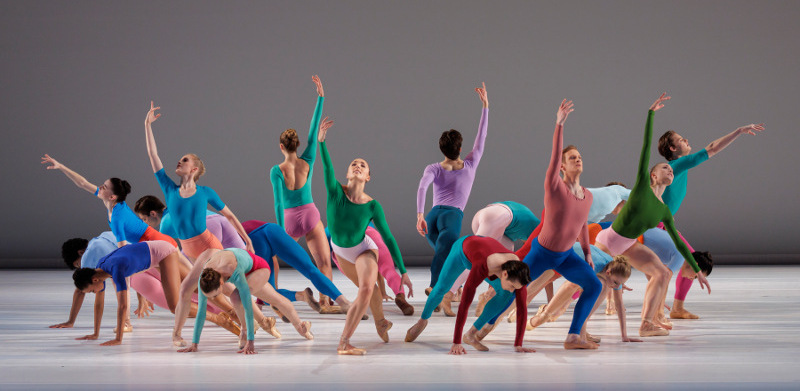
There is so much that is invigorating and innovative about Copland Dance Episodes, Justin Peck‘s major new full-evening work for New York City Ballet in its world premiere on January 26. Yet it also connects with, and alludes to, traditions and earlier works. It’s bracingly fresh and new – a ballet that sharpens your vision and expands your horizons.
For 75 seamless minutes, Peck’s fluidly logical abstract work persuasively weaves together Aaron Copland’s three well-known seminal ballet scores. They reverberate familiarly while also being scrubbed of the much more dramatic and specific ballets for which they were composed: Billy the Kid (1938). Rodeo (1942) Appalachian Spring (1944). For anyone familiar with the original choreography, it’s difficult on first viewing to fully erase the distinctive characters, costumes, and specific moments with which they’re so strongly associated.
(And also difficult not to wonder: how does the version of Appalachian Spring used by Peck omit the tense, demonic section that in the Martha Graham original choreography serves as the ominous “sermon” by the preacher, a role originated by Merce Cunningham?)

When Peck’s Rodeo premiered in 2015, it made a winning case for hearing this music in a new, contemporary vein. With fifteen men cavorting, competing, and sizing each other up—and one woman threading her way through to connect for a lush, dreamy duet—it marked a new level of maturity for Peck, at a very early point of his career.
Peck’s idea, in Copland Dance Episodes, that Copland merited further exploration, and that the three scores could fit together for a whole greater than the sum of its parts, is fully justified. It’s a dance that is carefully thought out (and at times veers towards the schematic), but its inventiveness, along with elements of surprise and humor, sustains its momentum and high level of interest.

Peck chose the artist Jeffrey Gibson as his scenic designer, but the entire stage is an open expanse throughout the intermission-less (and pause-free) ballet – a receptive canvas for Brandon Stirling Baker’s creamy, subtle and eloquent lighting design. Gibson’s contribution is on view as the audience settles in: a vibrantly colored drop curtain in which geometric patterns are overlaid with target-like circular designs, a large one framed by two smaller ones.
Gibson’s design mirrors elements of the choreography, in which a circular pull is a recurring motif, fluidly employed. It also echoes the two trios that are major players in the ballet and, in their own way, as central and significant as the two lead couples. Three playful, rambunctious men (Roman Mejia, Harrison Coll and Anthony Huxley) launch the action of Rodeo and become linchpins throughout the evening. In Ellen Warren’s bright, clean and simple costumes – which draw on the palette of Gibson’s artwork, with an emphasis on turquoise and rose shades – this trio is always easy to spot on stage.
So are their female counterparts (Megan Fairchild, Indiana Woodward, and Ashley Hod) who first appear in the quiet, stately opening moments of Appalachian Spring to join and seemingly replace the men for that portion of the ballet. They soon assert their own virtuosity during “Rue of Three,” blazing through successive solos.


Left: Alexa Maxwell, Jovani Furlan. Right: Miriam Miller, Russell Janzen
Peck gives such titles – often highly resonant ones – to each of the 22 “episodes” identified in the program, The duet for the original Rodeo couple (roles now danced by Mira Nadon and Taylor Stanley) is named “Two Birds,” and Peck gives these two an ongoing trajectory throughout the ballet. After their seemingly harmonious encounter in the first section, they pass through fleetingly in brief, expansive stage-crossings and ultimately arrive a moment of confrontation and separation, their prior closeness replaced by an aching vast distance.
Nadon then returns for one of the most intriguing sections, “Armor,” in which she is surrounded, shielded, possibly guided by four very tall women. Nadon seems poised for a new journey, one that will reunite her with Stanley — but not for long.
Another couple, Tiler Peck and Chun Wai Chan, dominate during the Appalachian Spring middle section, unspooling a continuous duet (“Alone Together”) in several separate sections that presents them as more youthful and in sync – as yet unaware of forces that might test their connection.

Not every moment of every duet sustains the same level of invention, but Peck more than makes up for that with the work’s overall elegant construction and the ingenuity and vigor of the ensemble sections. It’s quite heroic for just 30 dancers to carry such an enormous work; Jerome Robbins’ Goldberg Variations, of similar duration, calls on much larger forces. There are moments when Peck’s wit and ease at capturing the essence of this distinctively American, often propulsive music make one grin with delight.
Copland Dance Episodes captivated me throughout. At its conclusion I felt that not only had Peck successfully “scrubbed clean” the deep imprint of iconic works of American dance history, but that my very vision had been renewed. Using his own “blank page or canvas,” Peck has created a ballet that, in Sondheim’s immortal line, can “give us more to see.”
all photography by erin baiano for new york city ballet
Susan Reiter covers dance for TDF Stages and contributes regularly to the Los Angeles Times, Playbill, Dance Australia and other publications.

I love Copeland! These pictures are stunning and in combination with your stellar review, this is the first ballet I’ve wanted to see in a very long time.